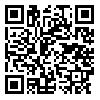BibTeX | RIS | EndNote | Medlars | ProCite | Reference Manager | RefWorks
Send citation to:
URL: http://jdm.tums.ac.ir/article-1-17-en.html
Background and Aims: The vitality pulp tests are necessary for diagnosis of pulpal disease and differentiation between endodontic and non-endodontic diseases. Thermal and electrical tests are conventional methods for evaluation of pulp vitality. The purpose of this study was to evaluate the effect of thermal changes on the tooth response to the electric pulp tester.
Materials and Methods: In this study, 160 intact maxillary central incisors of 40 voluntaries were evaluated. After isolation, electric pulpal response threshold in patients were recorded. After heat and cold tests, the electrical pulp test was repeated. The degree of response was recorded. The data were analyzed using pair T-test and independent T-test.
Results: The result of this study demonstrated that the average of teeth response to the electric pulp tester before and after cold test was 1.3 and 1.7, respectively. The average was 1.4 and 1.7 before and after heat test, respectively. There was no significant difference (P<0.001) between the pulpal response before and after thermal tests (heat and cold tests). In addition, no significant difference was found between pulpal response after heat and cold tests (P=0.25).
Conclusion: The response of tooth to the electric pulp tester was influenced by heat and cold tests.
Received: 2012/02/21 | Accepted: 2013/01/2 | Published: 2013/09/16
| Rights and Permissions | |
 |
This work is licensed under a Creative Commons Attribution-NonCommercial 4.0 International License. |




